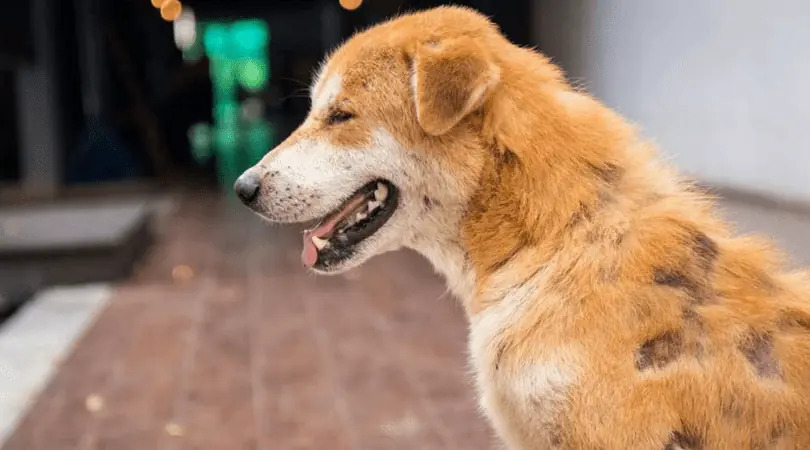
Dog and cat hair loss (also called alopecia) is the abnormal thinning or complete loss of hair. Hair loss is very common in pets and is one of the main reasons for veterinarian visits. When a dog or cat experiences hair loss this indicates a medical problem. Fortunately the most common cause is an allergic reaction to fleas and can be remedied with topical flea treatments and removal of fleas from the environment.
Hair loss in dogs and cats can appear as areas without hair (bald patches or alopecia) or areas with thinning hair. There may also be changes in the skin with increased pigmentation, redness, swelling, crusting, flaking, or moist oozing and discharge. There may be an unpleasant odor. If hair loss is caused by malfunction of adrenals, liver, kidneys, ovaries, testicles, or thyroid, pets may also have these signs:
- Behavior changes and irritability
- Lethargy
- Restlessness
- Weight gain or weight loss
- Increased water consumption
- Increased urination (polyuria/polydipsia or PU/PD)
Hair loss due to chewing and shedding
To evaluate whether hair was chewed off or fell out, hair is put under the microscope. Hair that falls out has a root with a little bulb. Hair that is chewed out does not end in a smooth bulb. Hair that falls out suggests illness, hormonal, or endocrine problems, but hair that is chewed suggests fleas, other external parasites, or behavioral problems.
Signs of an underlying disease or illness
Often pets that are ill hide symptoms and we first realize they might be ill because the hair falls out. For example, pets with Cushing’s disease begin drinking more and urinating more, but we might not notice until we realize their hair is falling out on their sides. Pets with hypothyroid disease become lethargic and put on weight, but we might not realize this is a medical problem until their hair thins or fails to grow back in after they are clipped.
For both dogs and cats, hair loss can also be influenced by:
- Skin parasites and Infections
- Allergies
- Poor nutrition
- Abnormal organ function
- Reduced blood flow
- Excessive or deficient hormones
- Pet medications
- Behavior (excessive grooming or anxiety)
Specific treatments for hair loss in pets will depend on the underlying cause. When encountering a patient with hair loss, veterinarians will take careful notes of the breed/age of the pet, as well as ask historical information from the pet owner. A thorough physical exam and tests such as skin scrapings, lab tests or cytology should lead to a tentative diagnosis and treatment plan. If your pet is losing hair and developing bald or thin patches it is a problem that should be addressed early when treatment is less expensive and more effective. Give us a call so one of our doctors can evaluate your pet.



